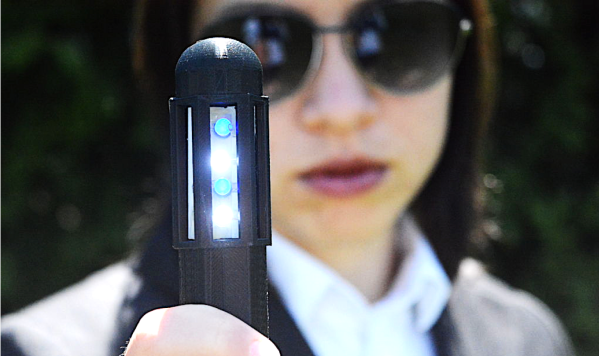We agree with you. We can never have enough cosplay hacks. And the ones that include some electronics element definitely have a special place in our hearts. That’s why when we ran across [Maddogg0’s] 3D printed Neuralyzer on Instructables, we knew we had to share.
You may recall [How to make’s] DIY Neuralyzer that we featured a few weeks ago which required more of a metal-working approach. [Maddogg0’s] design might be a bit more convenient for those of you that have a 3D printer, but no machine shop.
We love the elegant simplicity of [Maddogg0’s] design. The entire enclosure is printed in two halves that are held together by magnets. One half of the enclosure houses a single coin cell battery and a tiny circuit board for holding the LEDs in place, really giving the Neuralyzer some shine. In true maker fashion, [Maddogg0] released the necessary design files on TinkerCAD so anyone can reuse, remix, and reshare.
Whichever design you fancy, [Maddogg0’s] or [How to make’s], be careful not to point the Neuralyzer at yourself and always remember to wear your sunglasses!















